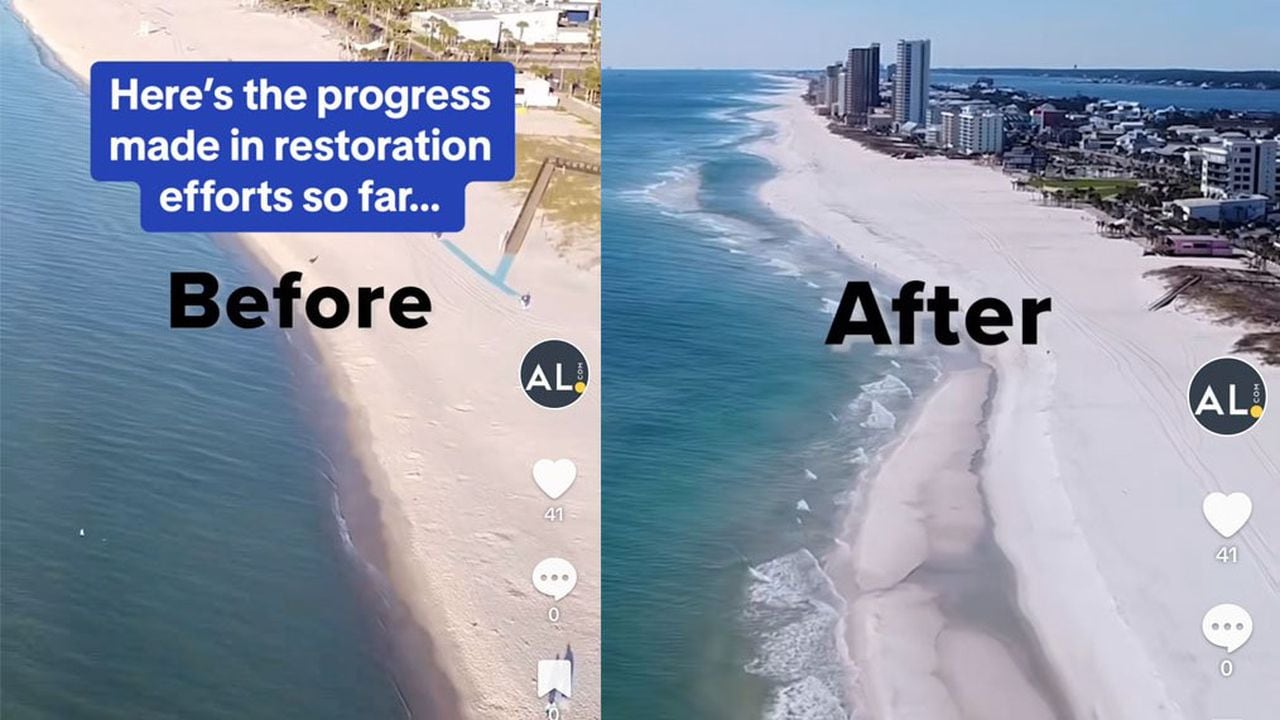See the before and after video of Alabamaâs beaches restoration project
Since late October a massive project to replenish beaches from Gulf Shores to Orange Beach has been under way. New AL.com aerial footage gives a sense of the effort required to shift more than 2.5 million tons of sand.
According to information on the project website, the work continues a beach restoration program that goes back to 2001. The last major renourishment was in 2012-2013; the current work is intended to offset erosion caused by Hurricane Nate in 2017 and Hurricane Sally in 2020 “as well as other storm impacts and background erosion.”
Great Lakes Dredge & Dock Co. said in September that it had been awarded a $32.8 million contract for the work. According to the engineer of record, Olsen Associates, the effort is being funded by the federal Emergency Management Agency, the Alabama Emergency Management Agency and a three-party project owner group consisting of Orange Beach, Gulf Shores and the Alabama Department of Conservation and Natural Resources.
Work has gone on around the clock since the project began; it is expected to continue through February, according to Olsen Associates. In a Dec. 21 status update, the company said that the contractor “plans to perform beach tilling and grading in Gulf Shores in late December – early January and other contractors will come in and plant dune vegetation and install sand fencing in certain areas.”
The city of Gulf Shores said in an October update that “Preservation of dune vegetation is a priority, with additional dune vegetation being planted as part of the project” and that “Dunes will be rebuilt up to around 12 feet of elevation, with Approximately 500,000 plants and more than 3,000 feet of sand fencing installed along the dune system.”
Gulf Shores Emergency Management Coordinator Brandan Franklin told AL.com in November that the project was “both environmentally friendly and economically a good thing,” in part because the rebuilt dunes would protect developed areas as well as bird habitat.
“Our beaches were basically flat without any dune protection,” Franklin said. “Having that elevation and the dunes having plants there to help grow the dune system offers our first layer of protection from any kind of storm.”
Extensive project details and updates can be found at https://olsen-associates.com/gsob/.
